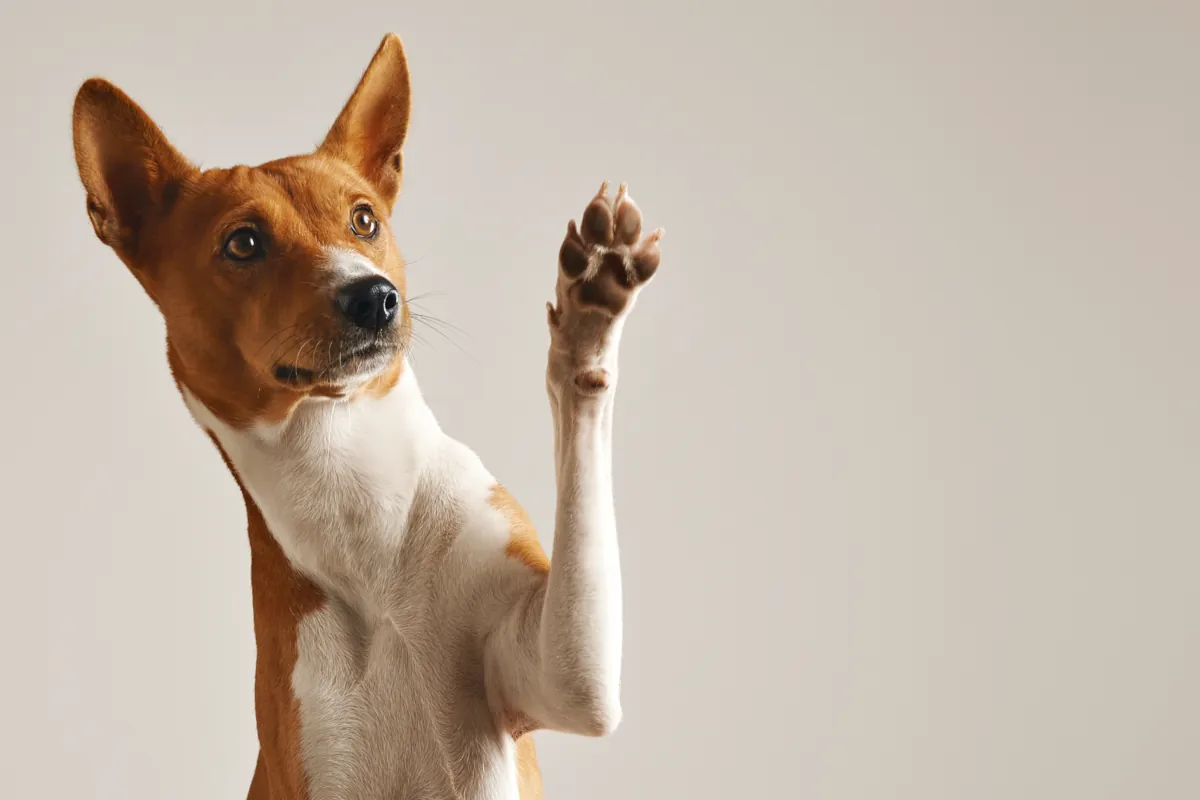Table of Contents
Introduction
If you’ve ever wondered “why do dogs lick their paws,” you’re not alone. This common canine behavior puzzles countless pet owners, especially when it becomes frequent or disruptive. While occasional paw licking is perfectly normal, excessive licking can signal underlying health issues, environmental factors, or behavioral concerns that need attention.
Understanding the root causes behind paw licking is crucial for maintaining your dog’s comfort and health. From allergies and anxiety to seasonal changes and breed-specific tendencies, numerous factors can contribute to this behavior. In this comprehensive guide, we’ll explore everything you need to know about paw licking, helping you distinguish between normal grooming and concerning patterns that require intervention.
Understanding Paw Licking: What's Normal and What's Not?
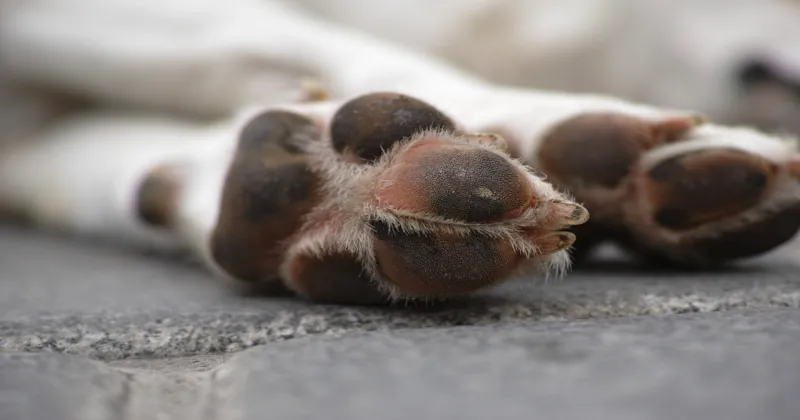
Dogs naturally groom themselves, including their paws, as part of their daily routine. Normal paw licking typically occurs after walks, before settling down for rest, or during general grooming sessions. This behavior helps dogs clean debris, dirt, and moisture from their paw pads and between their toes.
However, when wondering why do dogs lick their paws excessively, several warning signs indicate the behavior has moved beyond normal grooming. Problematic paw licking often involves persistent attention to one specific paw, creating visible wet spots on furniture or bedding, or continuing for extended periods throughout the day and night.
Signs that paw licking may indicate a deeper issue include redness or swelling around the paw area, brown staining from saliva on light-colored fur, raw or irritated skin between the toes, limping or favoring one paw, and a strong yeasty or unpleasant odor emanating from the paws. If you notice your dog licking paws and limping simultaneously, this often signals pain or discomfort requiring immediate attention.
The frequency and intensity of the licking behavior also matter. Dogs that interrupt sleep, play, or meals to lick their paws, or those who resist redirection from the behavior, likely need professional evaluation. Additionally, if you’re asking “how to stop dog licking paws at night” because the behavior disrupts your household’s sleep, this suggests the licking has become compulsive rather than functional.
Breed-Specific Risks: Why Some Dogs Lick More Than Others
Certain dog breeds show higher tendencies toward paw licking due to genetic predispositions to allergies, skin sensitivities, or anxiety disorders. Understanding your dog’s breed-specific risks helps you anticipate potential issues and implement preventive measures early.
Breeds particularly prone to allergies and subsequent paw licking include Golden Retrievers, Labrador Retrievers, German Shepherds, Bulldogs, and Cocker Spaniels. These breeds often develop environmental or food allergies that manifest as itchy, irritated paws. The constant scratching and licking can create secondary infections, making the problem worse over time.
Flat-faced breeds like Pugs, French Bulldogs, and Boston Terriers frequently experience skin fold dermatitis and are more susceptible to yeast infections between their toes. Their compressed facial structure can also contribute to breathing difficulties and anxiety, which may manifest as excessive paw licking behaviors.
Breeds with dense, double coats such as Huskies, Malamutes, and German Shepherds may trap moisture and debris between their toes more easily, leading to irritation and subsequent licking. These breeds also tend to be more active outdoors, exposing them to various environmental irritants.
High-energy, intelligent breeds like Border Collies, Australian Shepherds, and Jack Russell Terriers may develop compulsive paw licking as an outlet for boredom, anxiety, or insufficient mental stimulation. Understanding why do dogs lick their paws in these breeds often reveals behavioral rather than medical causes.
Tailoring prevention and care to your dog’s breed involves researching common health issues, selecting appropriate grooming tools and products, adjusting exercise and mental stimulation levels, and establishing breed-specific veterinary screening schedules.
Diet, Nutrition, and Paw Health: The Overlooked Connection
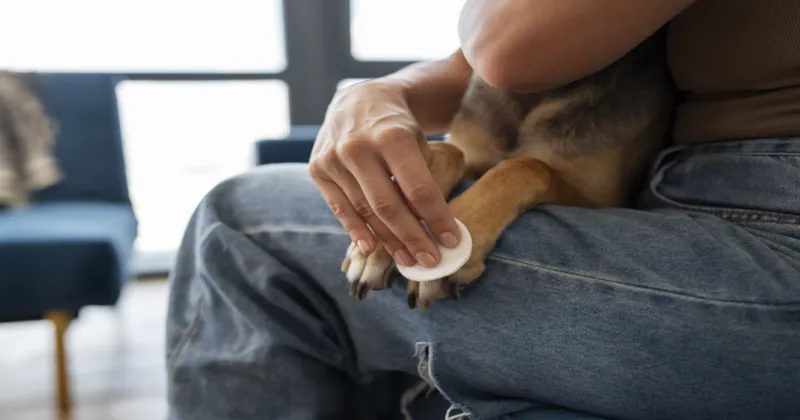
Many pet owners don’t realize that diet plays a crucial role in paw health and can significantly impact licking behaviors. Poor nutrition, food allergies, and nutrient deficiencies can all contribute to skin problems that manifest as excessive paw licking.
Food allergies are among the most common causes of paw licking in dogs. Common allergens include chicken, beef, dairy, wheat, corn, and soy. When dogs consume foods they’re allergic to, their immune system responds with inflammation that often appears in the paws, leading to itching and subsequent licking.
The quality of your dog’s food directly affects their skin and coat health. Low-quality foods containing excessive fillers, artificial colors, and preservatives can trigger inflammatory responses. High-quality proteins, essential fatty acids, and proper vitamin and mineral ratios support healthy skin that’s less prone to irritation.
Omega-3 and omega-6 fatty acids are particularly important for maintaining healthy skin barriers. Deficiencies in these essential fats can lead to dry, flaky skin that becomes easily irritated. Dogs lacking adequate omega fatty acids often develop itchy paws that they lick excessively for relief.
Can diet changes help with dog paw licking? Absolutely. Switching to limited-ingredient diets, hypoallergenic formulas, or novel protein sources can dramatically reduce food-related paw licking. Many owners see improvements within 6-8 weeks of dietary changes.
Supplements that may help reduce paw licking include fish oil for omega-3 fatty acids, probiotics for digestive and immune health, biotin for skin and coat health, and zinc for wound healing and skin integrity. However, always consult your veterinarian before adding supplements to your dog’s diet.
Environmental Triggers: Hidden Dangers in Your Home and Yard
Environmental factors often explain why do dogs lick their paws, yet these triggers frequently go unnoticed by pet owners. Identifying and eliminating these irritants can provide significant relief for affected dogs.
Indoor environmental triggers include harsh cleaning chemicals that leave residues on floors, carpet cleaners and deodorizers, air fresheners and scented candles, salt and ice melt tracked in during winter, and allergens like dust mites, pollen, or mold spores.
Outdoor hazards that can cause paw irritation include lawn chemicals like fertilizers and pesticides, sidewalk salt and de-icing chemicals, hot pavement and concrete during summer months, rough surfaces like gravel or mulch, plant allergens such as grass pollens or certain flowers, and insect bites or stings.
Understanding why dogs lick paws after walking on grass often reveals allergic reactions to grass pollens, pesticides, or fertilizers. This is particularly common during spring and fall when pollen counts are high.
To identify environmental paw hazards, observe when your dog’s licking increases. Note whether it occurs after walks in specific areas, following the use of certain cleaning products, during particular seasons, or after exposure to new environments.
Reducing environmental triggers involves using pet-safe cleaning products, removing shoes at entrances to prevent tracking chemicals indoors, installing air purifiers to reduce indoor allergens, avoiding recently treated lawns or gardens, and learning how to clean dog paws after walks to prevent licking by removing irritants before they cause problems.
Medical Causes Beyond the Usual Suspects
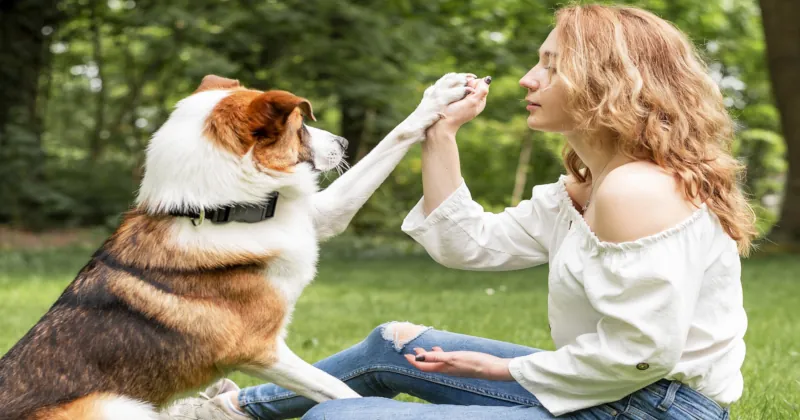
While allergies and infections are common causes of paw licking, several less obvious medical conditions can trigger this behavior. Recognizing these complex medical issues helps ensure proper diagnosis and treatment.
Autoimmune conditions like pemphigus complex or lupoid onychodystrophy can cause painful lesions on paw pads and nail beds, leading to excessive licking. These conditions require specialized testing and treatment from veterinary dermatologists.
Endocrine disorders such as hypothyroidism or Cushing’s disease can affect skin health and healing, making paws more susceptible to irritation and infection. Dogs with these conditions often show other symptoms like weight changes, hair loss, or increased thirst and urination.
Arthritis and joint pain can cause dogs to lick their paws, particularly if the pain radiates down to their feet or if they’re compensating for discomfort in other areas. Senior dogs may develop this type of referred pain that manifests as paw licking.
Neurological conditions affecting sensation or motor control can lead to compulsive licking behaviors. Some dogs develop focal seizures that present as repetitive licking rather than typical convulsions.
When to suspect a complex medical issue includes cases where standard treatments fail to provide relief, multiple paws are affected simultaneously, other systemic symptoms accompany the licking, or the behavior develops suddenly in older dogs without apparent triggers.
Seasonal and Climate Factors: How Weather Impacts Paw Licking
Weather and seasonal changes significantly influence paw health and can explain why do dogs lick their paws more during certain times of the year. Understanding these patterns helps pet owners adjust their care routines accordingly.
Winter weather presents unique challenges including dry air that dehydrates paw pads, salt and ice melt chemicals that irritate sensitive skin, cold temperatures that can cause cracking, and indoor heating that further reduces humidity levels.
Summer heat creates different problems such as hot pavement that can burn paw pads, increased bacterial and fungal growth in warm, moist conditions, higher activity levels leading to more exposure to irritants, and swimming in chlorinated pools or saltwater that can dry out paws.
Spring and fall bring elevated pollen counts that trigger allergic reactions, increased moisture that promotes yeast growth, seasonal shedding that can trap debris between toes, and temperature fluctuations that stress the immune system.
High humidity environments encourage bacterial and fungal overgrowth, particularly between toes where air circulation is limited. This explains why some dogs develop chronic yeast infections during humid months.
Adjusting paw care routines year-round involves using paw balms during dry winter months, avoiding hot pavement during summer walks, increasing paw cleaning frequency during high-pollen seasons, and monitoring humidity levels in your home.
For dogs sensitive to seasonal changes, consider using humidifiers during winter, scheduling walks during cooler parts of summer days, investing in protective booties for extreme weather, and maintaining consistent grooming schedules regardless of season.
Preventive Paw Care: Step-by-Step Grooming and Maintenance
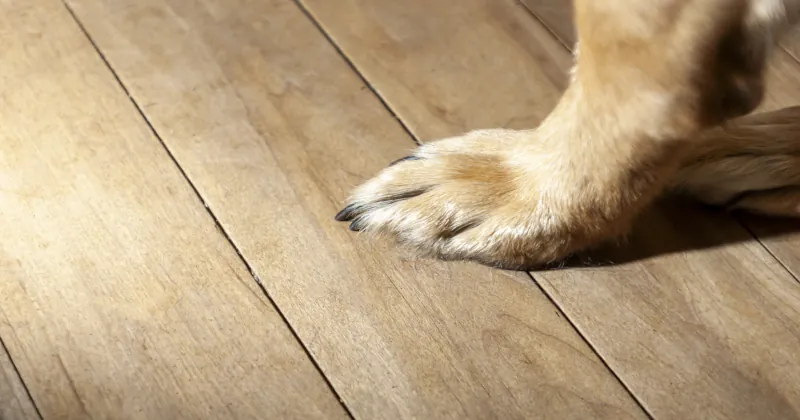
Establishing a consistent paw care routine is one of the most effective ways to prevent excessive licking behaviors. Daily and weekly maintenance helps identify problems early and keeps paws healthy and comfortable.
Daily paw care should include visual inspection for cuts, swelling, or foreign objects, gentle cleaning with pet-safe wipes after walks, checking between toes for debris or irritation, and ensuring paws are thoroughly dry after exposure to moisture.
Weekly grooming involves more thorough cleaning with warm water and mild soap, trimming hair between toes to prevent matting and debris accumulation, checking and trimming nails to prevent painful overgrowth, and applying paw balms or moisturizers as needed.
When choosing the right products for your dog’s needs, look for pH-balanced cleansers specifically designed for dogs, alcohol-free wipes that won’t dry out skin, natural moisturizers free from harmful chemicals, and hypoallergenic options for sensitive dogs.
Best paw balms for dogs with allergies typically contain natural ingredients like shea butter, coconut oil, or beeswax without artificial fragrances or dyes. These products help maintain skin barrier function and prevent cracking that can lead to infections.
Tools for effective paw care include soft-bristled brushes for cleaning between toes, nail clippers appropriate for your dog’s size, towels designated specifically for paw drying, and storage containers for organized grooming supplies.
Indoor vs. Outdoor Dogs: Lifestyle's Role in Paw Health
A dog’s lifestyle significantly impacts their paw health and licking behaviors. Indoor and outdoor dogs face different challenges that require tailored prevention strategies.
Indoor dogs primarily encounter household chemicals and allergens, limited exposure to natural surfaces that naturally wear down nails, reduced air circulation that can promote fungal growth, and potential boredom-related behaviors including excessive licking.
Outdoor dogs face exposure to environmental toxins and irritants, varied terrain that can cause cuts or abrasions, seasonal allergens like pollens and molds, and higher risk of parasites and infections.
City dogs navigate unique challenges including hot concrete and asphalt, chemical runoff from streets, limited green spaces for natural exploration, and exposure to urban pollutants and allergens.
Suburban dogs typically encounter lawn chemicals and fertilizers, neighborhood pets that may carry infections, varied walking surfaces from concrete to grass, and seasonal yard maintenance chemicals.
Rural dogs experience exposure to wildlife and associated parasites, farm chemicals and fertilizers, rough terrain including rocks and thorns, and potential contact with livestock or wild animal droppings.
Tips for safe walks and play in every setting include avoiding recently treated lawns, checking paws immediately after outdoor activities, carrying water for rinsing paws during long hikes, and learning to recognize signs of environmental irritation.
Behavioral Roots: Anxiety, Boredom, and Compulsive Licking
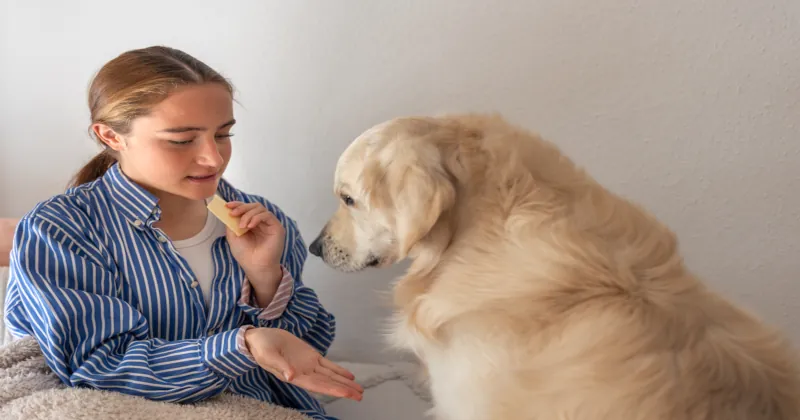
Understanding why do dogs lick their paws often reveals behavioral rather than medical causes, particularly in intelligent, high-energy breeds or dogs experiencing stress and anxiety.
Anxiety-related paw licking typically occurs during specific triggers such as thunderstorms, fireworks, or separation from owners. Dogs may develop this as a self-soothing behavior that provides temporary comfort during stressful situations.
Boredom-induced licking often develops in under-stimulated dogs who lack adequate mental and physical exercise. This behavior may start as occasional stress relief but can become compulsive over time.
Identifying behavioral versus medical causes involves observing when the licking occurs, whether it responds to distraction or redirection, if it correlates with specific emotional states, and whether medical treatments provide relief.
Modern enrichment tools that can reduce behavioral licking include puzzle feeders that slow eating and provide mental stimulation, interactive toys that dispense treats, snuffle mats that encourage natural foraging behaviors, and rotation schedules that keep toys novel and interesting.
Training strategies for addressing compulsive licking include teaching “leave it” commands, redirecting attention to appropriate activities, providing alternative outlets for stress and energy, and implementing consistent daily routines that reduce anxiety.
Tech and Trends: New Solutions for Modern Pet Owners
Technology increasingly offers innovative solutions for monitoring and managing paw licking behaviors, providing pet owners with new tools for early intervention and prevention.
Wearable devices for monitoring and managing licking include activity trackers that detect excessive grooming behaviors, smart collars that monitor licking frequency and duration, cameras that allow remote observation of behaviors, and apps that track symptoms and treatment responses.
Some devices use gentle vibration or sound to interrupt compulsive licking when detected, helping break the behavior cycle without causing distress. These tools work best when combined with addressing underlying causes rather than relying solely on behavior interruption.
Telehealth for early intervention allows pet owners to consult with veterinarians remotely, share photos and videos of concerning behaviors, receive guidance on when in-person visits are necessary, and maintain treatment records accessible from anywhere.
Digital health tracking apps help owners monitor patterns in their dog’s licking behavior, track correlation with diet changes or environmental factors, schedule reminding for medications or treatments, and share comprehensive data with veterinary professionals.
Smart home technology can also contribute to paw health through air quality monitors that detect allergens, automated humidity controls that maintain optimal levels, and smart feeding systems that ensure consistent nutrition.
Natural and Sustainable Paw Care: What Works and What Doesn't
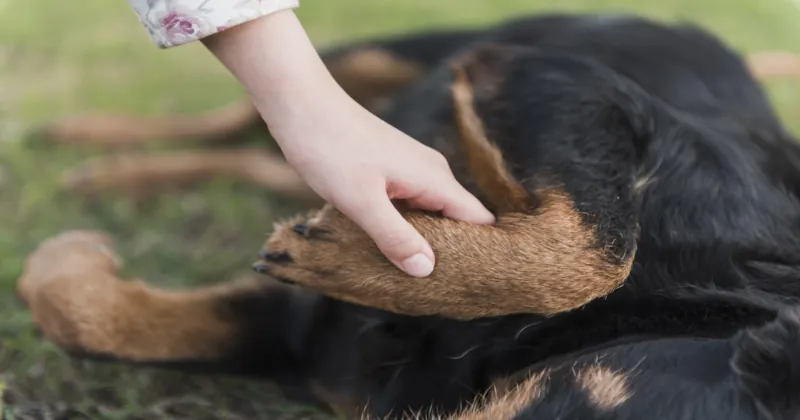
Many pet owners seek natural alternatives for managing paw licking, but it’s important to distinguish between effective remedies and potentially harmful myths.
Home remedies for dog paw irritation that show promise include oatmeal soaks for their anti-inflammatory properties, diluted apple cider vinegar rinses for their antimicrobial effects, coconut oil applications for moisturizing and antimicrobial benefits, and Epsom salt soaks for reducing inflammation and drawing out infections.
Natural solutions for dog paw yeast infection might include probiotics to support healthy skin flora, tea tree oil (properly diluted) for its antifungal properties, and maintaining proper hygiene to prevent yeast overgrowth.
Safe, eco-friendly products include organic paw balms free from petroleum products, biodegradable cleaning wipes, natural deodorizers without harsh chemicals, and sustainable packaging options that reduce environmental impact.
Myths versus facts about natural treatments require careful consideration. While many natural remedies offer benefits, some popular suggestions can be harmful. Essential oils, for example, can be toxic to dogs if used improperly, and some “natural” doesn’t always mean “safe” for pets.
DIY remedies should always be discussed with veterinary professionals before implementation, particularly for dogs with known allergies or sensitivity issues. What works for one dog may not be appropriate for another.
When to Seek Help: Red Flags and Emergency Signs
Knowing when paw licking requires professional intervention can prevent minor issues from becoming serious health problems.
Signs my dog’s paw licking is serious include persistent licking despite removing obvious irritants, development of open wounds or sores, swelling that doesn’t resolve within 24-48 hours, strong odors emanating from paws, and behavioral changes like loss of appetite or lethargy.
Emergency signs requiring immediate veterinary attention include severe swelling or sudden onset limping, bleeding that doesn’t stop with gentle pressure, visible foreign objects embedded in paws, and signs of systemic illness accompanying paw problems.
How to triage paw licking at home involves first removing any visible irritants, gently cleaning the affected area, preventing further licking with protective coverings if necessary, and monitoring for changes over 24-48 hours.
Questions to ask your vet during visits should include inquiries about underlying causes, expected timeline for improvement, preventive measures for your specific dog, and when to seek follow-up care.
What to expect during a veterinary visit typically includes physical examination of all paws, discussion of medical history and recent changes, possible diagnostic tests such as skin scrapings or cultures, and development of treatment plans tailored to identified causes.
Long-Term Consequences: Why Early Action Matters
Addressing paw licking promptly prevents numerous complications that can develop when the behavior becomes chronic or severe.
Potential complications of chronic licking include secondary bacterial infections from constant moisture, permanent scarring or skin thickening, nail bed infections that can be difficult to treat, and development of compulsive behaviors that resist treatment.
Chronic licking can also lead to “lick granulomas” – raised, thickened areas of skin that develop from persistent trauma. These lesions can become self-perpetuating, as their rough texture encourages continued licking.
If your dog shows signs like “why does my dog only lick one paw,” this focused attention can quickly lead to serious localized damage requiring extensive treatment.
Strategies for preventing recurrence include identifying and addressing root causes rather than just treating symptoms, maintaining consistent preventive care routines, monitoring for early signs of problems, and adjusting management strategies based on seasonal or lifestyle changes.
Long-term management may require ongoing dietary modifications, regular veterinary monitoring, environmental modifications, and behavioral management techniques.
Conclusion
Understanding why do dogs lick their paws requires considering multiple factors from medical conditions to environmental triggers and behavioral causes. By identifying the specific cause in your dog and implementing appropriate prevention and treatment strategies, you can help ensure your pet’s comfort and health while preventing complications that arise from chronic paw licking. Remember that persistent or severe cases always warrant professional veterinary evaluation to rule out serious underlying conditions and develop effective treatment plans.
Read more –
Why Is My Dog Panting at Night? A Warning for Dog Lovers
Must-Know Signs Your Dog Needs to Be Neutered Soon
FAQs
How to stop dog licking paws at night?
Nighttime paw licking often indicates anxiety, boredom, or discomfort. Try increasing daytime exercise, providing mental stimulation before bedtime, using protective booties if necessary, and ensuring comfortable sleeping conditions. Address any underlying medical issues first.
What should I do if my dog is licking paws and limping?
This combination suggests pain or injury requiring immediate attention. Gently examine the paw for visible problems, restrict activity, and contact your veterinarian promptly. Don’t attempt home treatment for limping dogs.
Can seasonal allergies cause paw licking?
Yes, seasonal allergens like pollens commonly trigger paw licking. Dogs may develop contact allergies from walking on grass or inhaled allergies that manifest as itchy paws. Consider allergy testing if seasonal patterns are obvious.
Are there specific foods that can help reduce paw licking?
High-quality diets rich in omega fatty acids can support skin health. Limited ingredient or hypoallergenic diets may help if food allergies are suspected. Consult your veterinarian before making significant dietary changes.
How long should I wait before seeing a vet for paw licking?
Seek veterinary care if licking persists more than 3-5 days, if you notice swelling or discharge, if your dog shows signs of pain, or if the behavior interferes with daily activities.
Can I use human products on my dog's paws?
Many human products are unsafe for dogs. Always use pet-specific products or consult your veterinarian before applying any topical treatments to your dog’s paws.

